Kannekudi katne or karkali | Kannekudi relish

By Leena Hegde, Puttanamane
Kannekudi is a herb / weed, and katne or karkali is a type of relish. Kannekudi and other herbs take top place in the havyaka kitchen in rainy season. Every monsoon marks the aroma of these relishes in the havyaka households.
This relish features fresh kannekudi leaves, tamarind, garlic, and a few spices. With a balance of flavours and a bit of acidic note, kannekudi katne is the perfect refreshing relish to the monsoon meals. The kannekudi katne is served alongside fresh butter with plain rice. However, butter is optional.
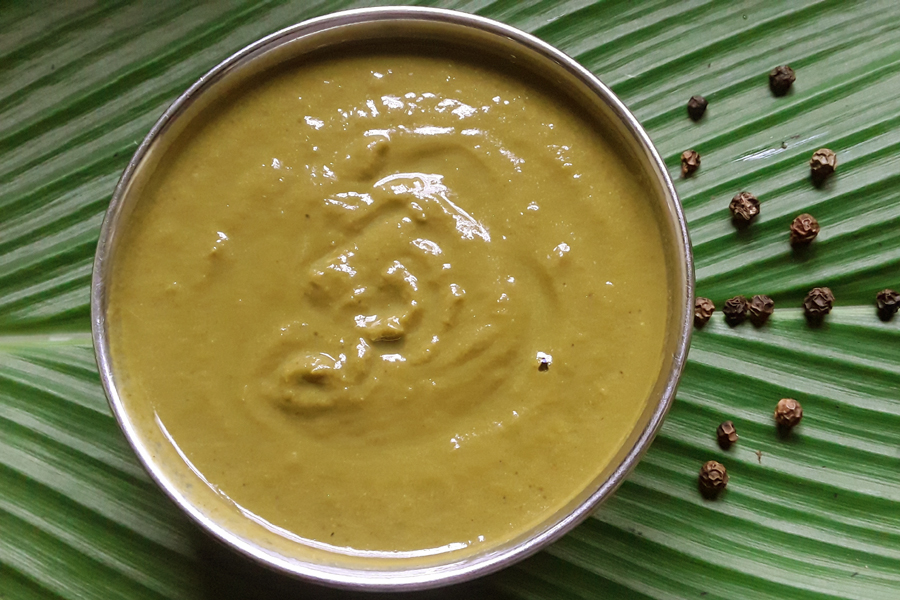
What is Kannekudi?
Kannekudi is an uncultivated plant / herb / weed found in abundance in the western ghat region of Karnataka especially during monsoon. Kannekudi belongs to knotweed (Polygonaceae) family, but I am not very sure of its botanical or scientific name Persicaria chinensis. So I stick to local name Kannekudi here. The term Kanne is derived from the word Kanya (girl), and kudi meaning sprig. Again, I have no idea of the history of the origin of this name to this herb!
Though there is no good scientific evidence to support the uses of this herb / weed, our ancestors used this richly in cooking as precautionary food for common cold, cough, sore throat, indigestion, and other conditions, which are the common consequences of heavy rains in the region.
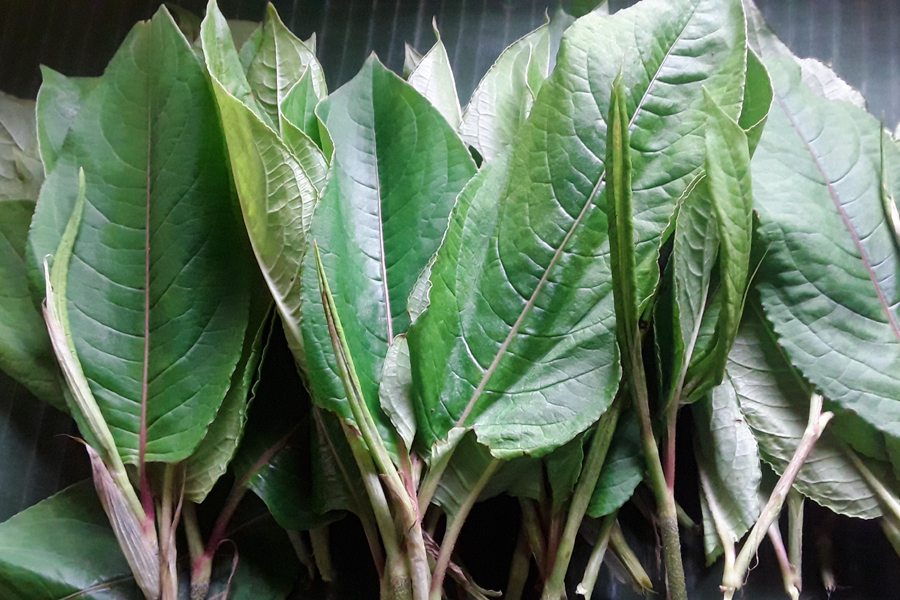

Prep time
20 mins
Cook time
5 mins
Cool off time
0
Total time
25 mins
Course
Curry
Diet
Vegan, Vegetarian
Difficulty level
Easy
Servings
1 cup
Ingredients
-
30 – 35 kannekudi leaves
- 10 – 15 black/white pepper
- ½ teaspoon cumin seeds
- 1 tablespoon to ¼ cup grated coconut (tightly packed)
- 8 – 10 garlic cloves
- A small piece of tamarind
- Salt as required
- Water as required
Cookware / Utensils
-
Pan
- Bowl(s)
- Spoon
- Mixer
Instructions
Instructions
- Clean kannekudi. Remove the sheath around tender leaves while cleaning.
- Rinse them thoroughly. If you suspect pests, soak them in salt water for 20-30 minutes.
- Take kannekudi in a cooking bowl. Add a cup of water or as required.
- Cook them on medium flame. Let them cool.
-
Heat a pan and roast cumin seeds and black pepper.
If you like you can add a few drops of oil to fry the spices. - Grate 1 tablespoon fresh coconut. Peel garlic and wash them.
- Take cooked kannekudi, grated coconut, roasted spices, garlic, and tamarind in a mixer jar.
- Grind them to a smooth paste.
- Take it in a cooking bowl or pan. Add salt as requited and mix well.
- Heat the kannekudi katne on medium flame and bring it to boil while stirring frequently.
- Switch off and serve hot with plain rice, and fresh butter. Butter is optional.
Step by step guide
How to make Kannekudi katne
1. Clean kannekudi. Remove the sheath around tender leaves while cleaning.
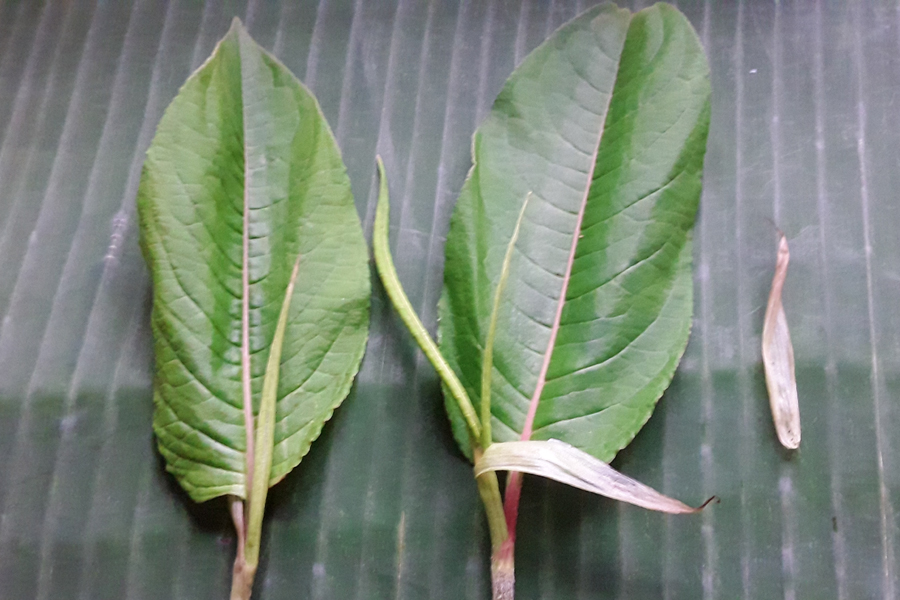
2. Rinse them thoroughly. If you suspect pests, soak them in salt water for 20-30 minutes.
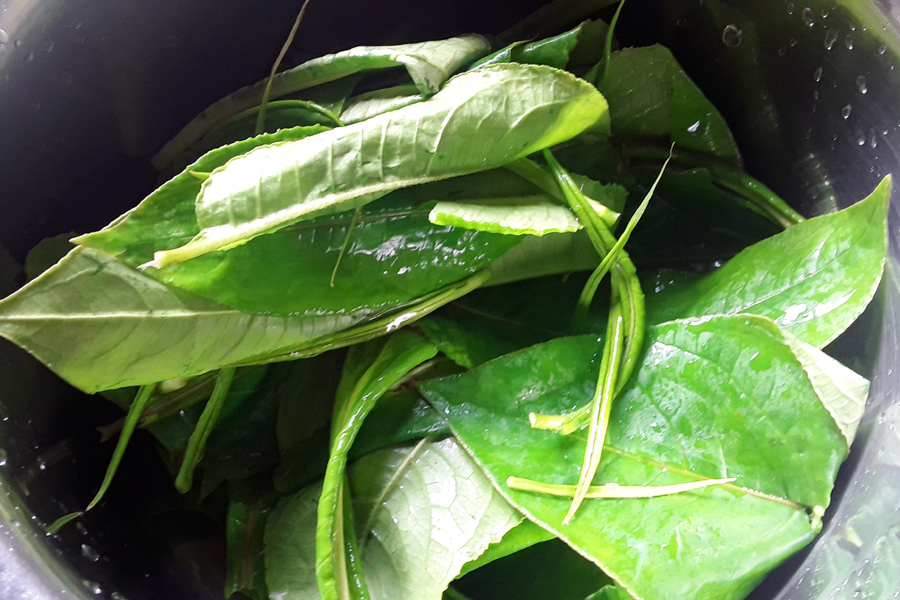
3. Take kannekudi in a cooking bowl. Add a cup of water or as required and cook them on medium flame. Let them cool.
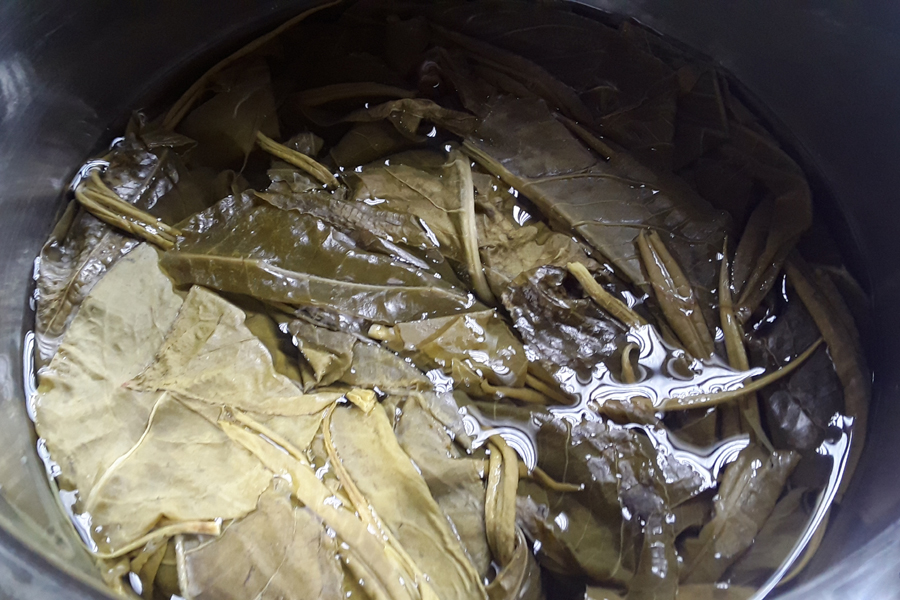
4. Heat a pan and roast cumin seeds and black pepper. If you like you can add a few drops of oil to fry the spices.

5. Grate 1 tablespoon fresh coconut. Peel garlic and wash them.
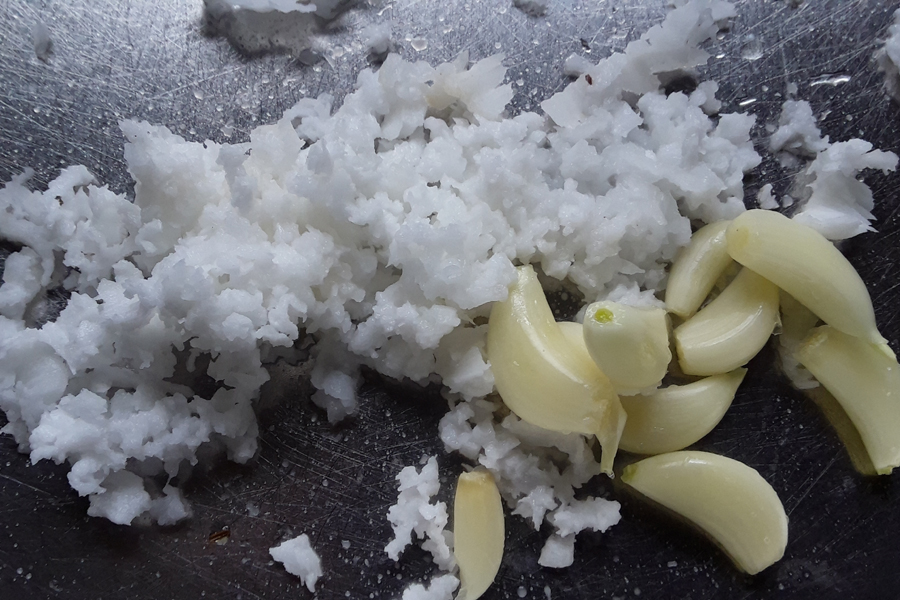
6. Take cooked kannekudi, grated coconut, roasted spices, garlic, and a piece of tamarind in a mixer jar.
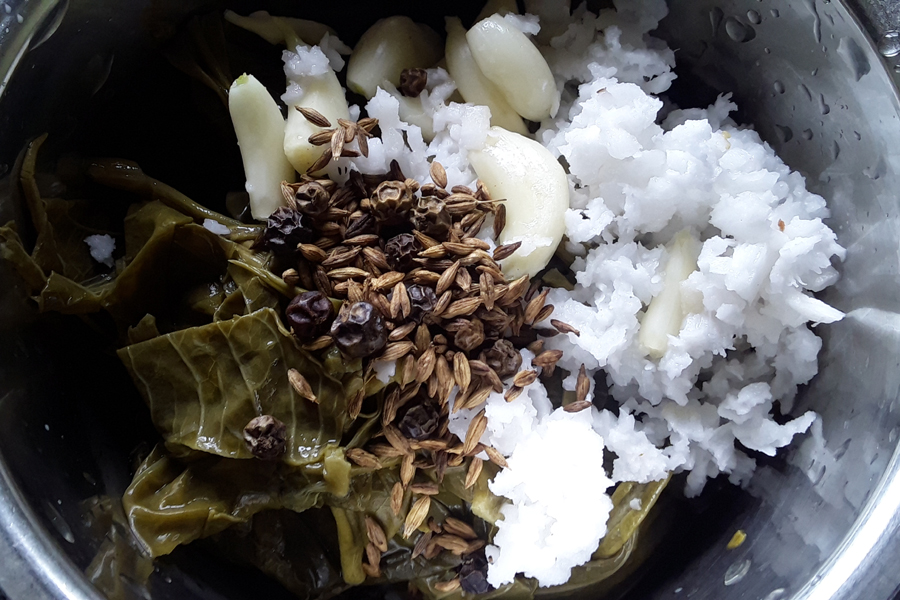
7. Grind them to a smooth paste.
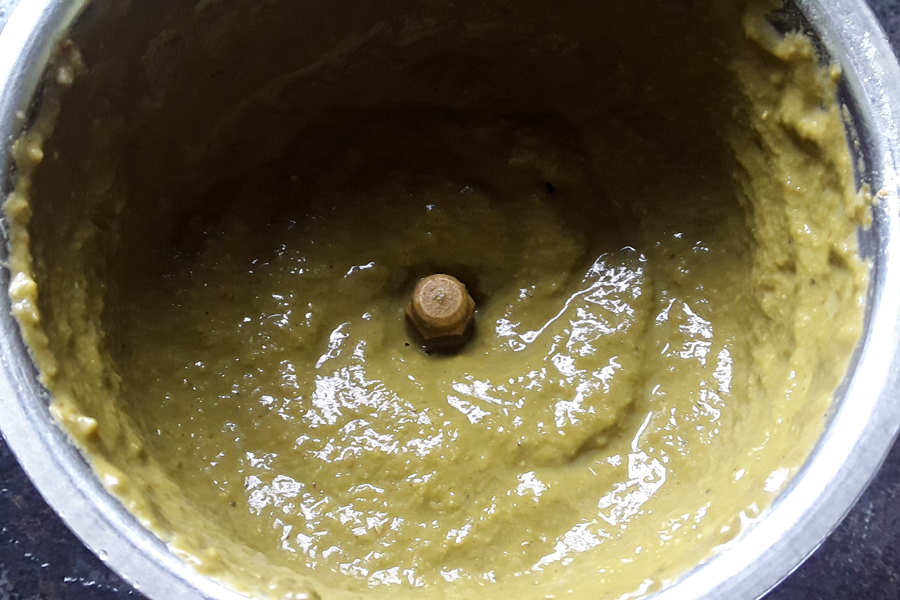
8. Take it in a cooking bowl or pan. Add salt as requited and mix well.

9. Heat the kannekudi katne on medium flame and bring it to boil while stirring frequently. Switch off and serve hot with plain rice, and fresh butter. Butter is optional.
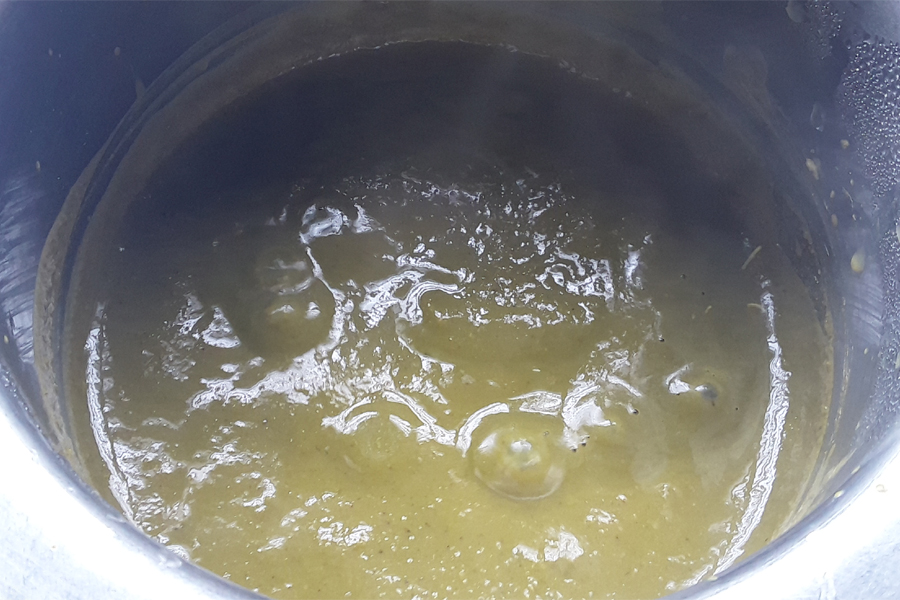
Notes
-
Black or white pepper or both in proportion can be used for making Katne. You can increase or decrease the quantity of the pepper as per your taste.
- I add less coconut to enhance the richness of Kannekudi. You can add up to tightly packed ¼ cup grated coconut to this recipe.
- Garlic can be skipped to make the katne or relish Saatvik.
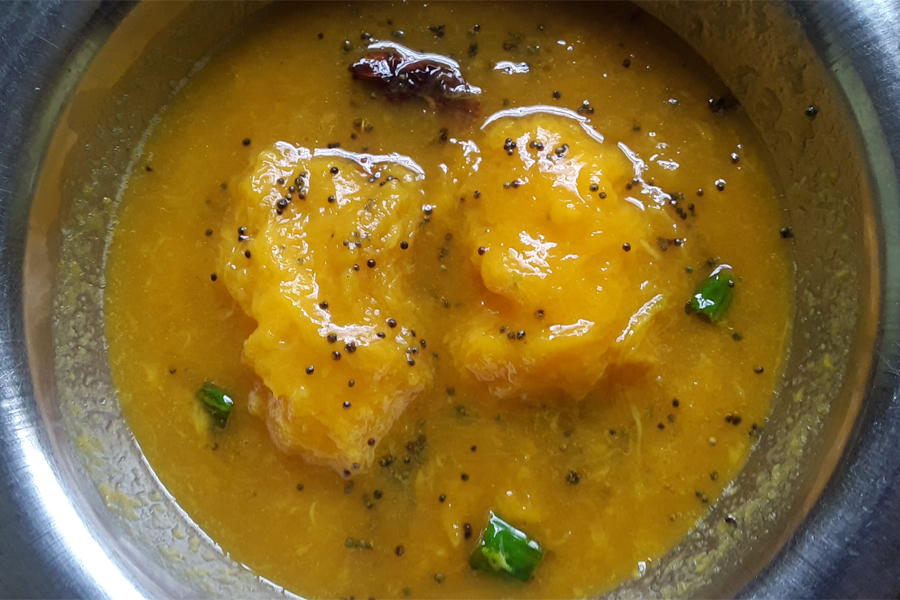
Neergojju | Sweet-sour-spicy mango pulp
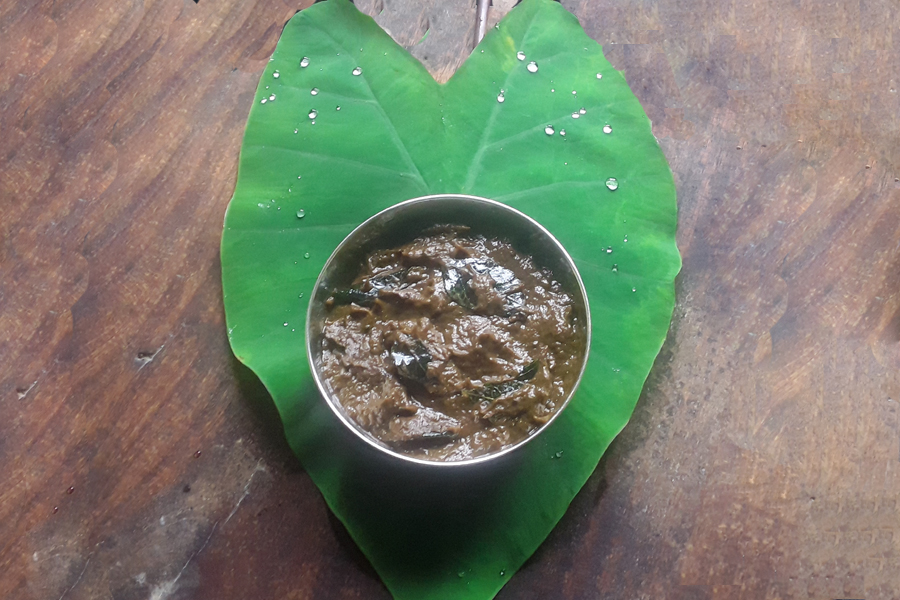
Kesavina karkali | Colocasia or taro relish
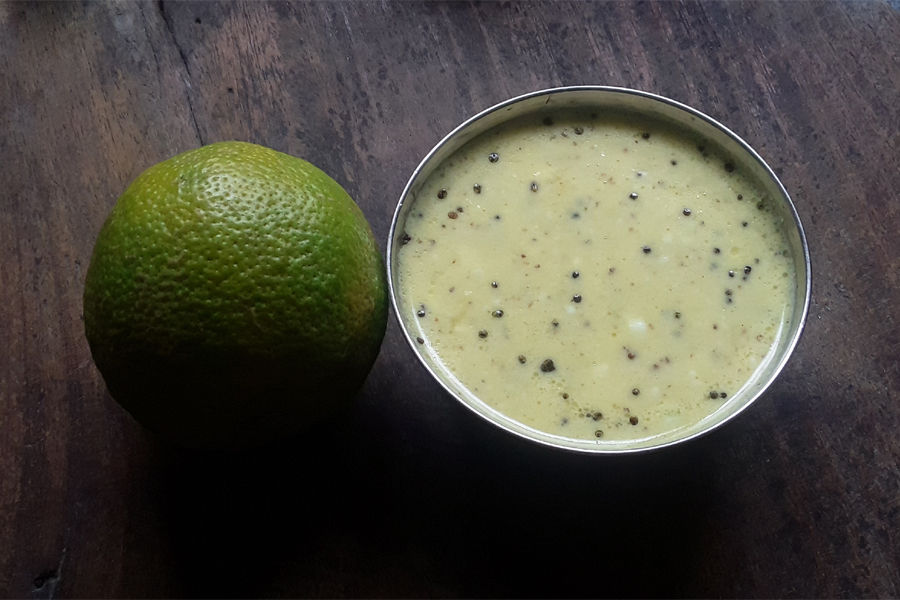
Nimbe hannina sasime | Lemon sasime

Kannekudi katne or karkali | Kannekudi relish

Maavinakaayi appehuli | Raw boiled mango appehuli

Savatekaayi hashi | Cucumber raita

Maavinakaayi tambli | Raw mango tambli

Tove or Tovve | Dal

Shunthi tambli | Ginger tambli

Hirekaayi tambli | Ridge gourd tambli

Shiya appehuli | Sweet appehuli

Mavinakaayi marige bajji | Mango raita

Kittale sippe gojju | Orange peel relish

Hasi appehuli | Raw mango appehuli

Balekayi palya | Raw banana curry

Mavina hannina sasime | Mango sasime

Haagal kaayi hulimelara | Bitter gourd curry

Batate or Aloo hashi | Potato raita

Haagalkaayi hashi | Bitter gourd raita

Dappa appehuli | Raw mango gravy

Jackfruit Huli | Lentil-jackfruit stew
